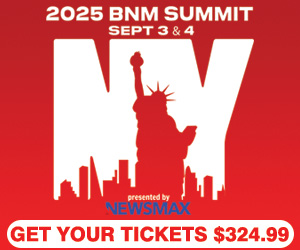For the past 19 years I’ve made my living in the radio industry. Most of that time has been spent in the sports talk radio format, a format which I love and believe strongly in. I’ve been fortunate to be trusted by various companies to manage their brands, create the vision of their radio stations and make personnel decisions to elevate the brand’s ratings so I have a high opinion of what type of connection can be built in this format between talk show host’s and listening audiences.
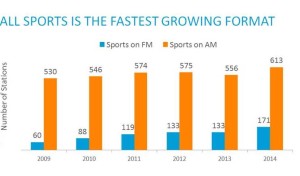 I equally believe that advertisers who invest in this format gain significant advantages by being associated with it.
I equally believe that advertisers who invest in this format gain significant advantages by being associated with it.
For years I’ve listened to critics label this format as niche and take shots at whether or not sports talk radio could deliver real results for clients and it’s been frustrating to hear at times because I’ve personally witnessed many success stories. Conversely, sports television rarely has received the same venom or disrespect yet they target much of the same audience. While the numbers are certainly higher for television, the traits of the targeted consumer are no different.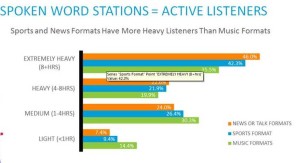
I can personally recall running a promotion in San Francisco titled “Lucky Break” where we rewarded one undiscovered talent with a contract to work for the radio station for 1 year and while doing auditions, some contestants would weave in the words “reach us on the McDonald’s Text Line” without even being prompted to. That’s the type of connection this format delivers for advertisers better than any other.
When you look at the entertainment options available to people today, radio’s best chance to remain a priority is to offer content that is unique, people who stand out and brand associations that make your product cool. Fortunately for those of us who work in the format, sports talk radio possesses many of those ingredients.
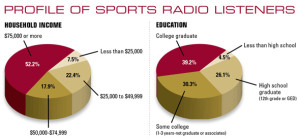 This format also targets an attractive demographic (Men 25-54) and that’s important to advertisers because this audience has something they want – money! The bottom line is that we’re all in business to grow business while additionally looking to raise the profile of our brands in a positive light so when a company forms an association with a sports radio station, there is an unspoken value and image benefit that comes with it.
This format also targets an attractive demographic (Men 25-54) and that’s important to advertisers because this audience has something they want – money! The bottom line is that we’re all in business to grow business while additionally looking to raise the profile of our brands in a positive light so when a company forms an association with a sports radio station, there is an unspoken value and image benefit that comes with it.
When you look at how radio has evolved, in many markets now, the personalities on sports radio stations are seen by the audience as local rock stars, much like the local music DJ’s were viewed on radio and television in the 1980’s.
While 20 years ago the local newspaper was your source for information and opinion, today you get your information from social media and popular websites and you learn what that information means by tuning into your local sports talk radio personalities. It’s the exact reason why newspapers started creating podcasts, video commentaries and even full-time sports talk on their websites.
In 2013 BIA/Kelsey conducted their annual study on which station’s delivered the highest revenue in the nation and of the top 10 performers, 4 had some form of sports marketing involved with their product. WFAN in NY was the lone full-time sports talker in in the group and the other 3 (WBBM, WGN and WCBS) carried the Yankees, Cubs and Bears respectively.
While one could suggest that the information in that study shows that the format has made progress, I could equally question why only 1 of the top 10 billing stations in the country was an all-sports station and why play-by-play is seen as attractive to clients yet the content created by personalities during the work week with audiences who are engaged in it isn’t viewed as important.
I was curious to get some insight on the challenges sports radio sellers face today and what they perceive as the format’s biggest advantages so I reached out to 5 different people who I respect in this industry to obtain their expertise.
In assembling this piece, I wanted to target 5 different markets and folks who have been involved in different organizations in order to illustrate some of the differences and similarities that exist in our industry. I think you’ll find the feedback provided by some of these great business leaders to be extremely helpful especially if you work on the programming side of the business.
 The 5 featured panelists in today’s conversation are listed below. You can find out more about each of them by clicking the link on their names to be redirected to their LinkedIn profiles.
The 5 featured panelists in today’s conversation are listed below. You can find out more about each of them by clicking the link on their names to be redirected to their LinkedIn profiles.
- Paul Blake – Philadelphia – VP of Sales for Greater Media
- Jessica Webb – Phoenix – VP of Sales for Bonneville Arizona
- John Goforth – Chicago – Sports Sales Manager for 670 The Score
- Payton Raymond – San Francisco – Director of National Sales for Entercom
- Jim Heilman – Atlanta – Former Director of National Sales for 790 The Zone & GSM of WKNR Cleveland
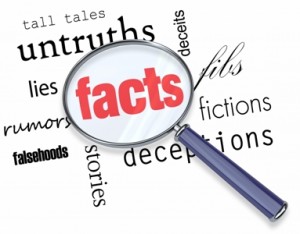 What is the biggest misconception of the sports talk radio format in the advertising community?
What is the biggest misconception of the sports talk radio format in the advertising community?
Raymond: I believe the biggest misconception is how valuable the audience is. If you’re not a sports fan or listener to sports radio then there’s a big chance that you don’t see the marketing benefits of being associated with it. Sports fans are passionate and loyal supporters of the format. They always have an opinion and want to discuss the good and bad of their favorite teams. Listeners of sports talk also tend to have great qualitative profiles like employed full time, home ownership and college degrees. I believe that sports programming is not being measured properly by Nielsen and that puts us in a bad situation on paper when being evaluated by the agencies.
Webb: That it is super niche – all X’s and O’s. We refer to it as highly targeted, totally engaging (mostly) guy talk.
Blake: Agencies require ratings yet this format delivers results without needing to be a “top rated” station in the market.
Goforth: That our listeners are our callers. Agencies, and to a lesser degree, clients sometimes think of the sports talk listener as a 35 year old meatball who still lives at home and spends his disposable income on cheap beer and replica jerseys. The reality is that sports talk radio has the most affluent and most educated listener of any format in radio (according to Nielsen).
Heilman: That it’s limited to a very small audience. There are two places that people come to each week in mass regardless of the economy/weather/mood etc…Church and Sporting events. Everyone is a sports fan and the incomplete nature of the current audience measurement tools that exist today misconstrue the power of sports radio. While it is no doubt predominately a male audience, there are many female listeners. Also, I would argue that the audience is much larger and much more engaged than what is currently reflected in the ratings. Sports talk and play by play are the last remaining segment that people want to listen to or watch live, not record or DVR or passively participate with. A very underrated medium for sure!
How much do the ratings of your radio station impact your ability to continue driving rates and increasing your revenue?
Raymond: On a national level, ratings make or break a stations ability to drive revenue. In national sales there’s really no personal emotion unlike working with a local business who may love the format and its personalities and listen to it every day. Everything nationally must be justified with ratings and cost per points. There’s less focus on that locally.
Webb: This question fires me up like no other. I don’t believe that Nielsen gives fair and accurate credit to spoken word formats, not just Sports. That being said, our lives would definitely be easier with ratings. In spite of the lack of ratings, we will still post top 2 local and digital revenue in the market. But it’s a constant grind. There’s no easy money.
Blake: It can depend on competition. If you’re competing against another sports station then you need to be ahead of or within striking distance of that station. However, the ratings are not compared as much to music-based stations. It’s a great local direct results format.
Goforth: Minimally – rarely do you see a M25-54 avail come down from agencies, so as long as our ratings keep us in the agency fight, we’ll be fine. The direct conversation rarely involves ratings…it’s about results.
Heilman: Again it’s an old way to value and position. Create value propositions based on goals and objectives of the client and their target audience. Ratings to me are irrelevant. If a campaign meets my objectives (sales goals/drives in store/brand awareness) who gives a shit about the ratings…it works!
What type of importance do you place on having play by play on your station?
Raymond: Play by play (pxp) is all upside for national sales. It gives you an asset to incorporate into media sales pitches that no one else can offer. Would you like to be the sports station with no play-by-play going into a client meeting following your local competitor and their pitch of being associated with a popular local team? PXP brings more audience to the station and also gives an exclusive product offering to clients.
Webb: Very important. We love the brand association and our team partnerships. We carry MLB, NFL, NBA, NHL and NCAA football and basketball. It’s nice having that feather in your cap but it’s tough keeping sales people focused on selling all of it.
Blake: It’s great for branding but it also has to be a profitable venture.
Goforth: In my opinion, it’s the number one marketing tool we have. People tune in for the game on a Monday night and on Tuesday morning they’re listening to the station. Also, it’s great for credibility in the marketplace and client entertainment. From a revenue standpoint it helps with ancillary programming such as sponsorships of team-centric shows, play by play host appearances, and access to players, not to mention merchandising.
Heilman: Play by Play can be a major driver but again it varies by team, market and local audience interest.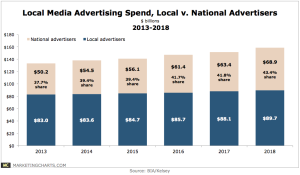
In your market, what is the split between local and national advertising? Do you see that split continuing in the future?
Raymond: National spot advertising is about 38% of the revenue in San Francisco which has remained consistent over the years.
Webb: National accounts for less than 10% of the billing in our building. I see it flat to down in the future.
Blake: 15% national and I don’t see that changing. It’s different by market though. For us we’re very close in proximity to NYC which is a factor.
Goforth: That’s an extremely tough question to answer as every company defines “national” differently. However, I think it’s fair to say that if “national” were an AE – they’d have the highest billing. As far as the future is concerned – I don’t know that I see it changing a ton (towards more national). Many clients enjoy the ideation and creativity that is spurred by having local reps.
Heilman: During my time selling sports radio in Atlanta, the split was roughly 40% national 60% local but every market is different.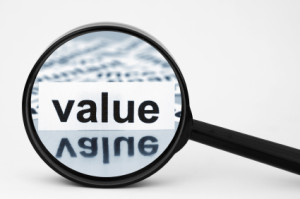
How do you decide what your assets are worth? What do you do to make sure you’re receiving fair market value for them?
Raymond: Based on feedback and demand from advertisers. Our sales manager’s set the pricing for our assets.
Webb: All depends on the asset. Each situation is unique.
Blake: We continue to assess supply and demand of our assets and price accordingly per the needs of our clients.
Goforth: No matter where I’ve worked, the answer to this question doesn’t change. Assets are worth every penny a client will spend and nothing more. If something isn’t selling or gaining traction for whatever reason, the price either needs to lower or go away (this is assuming it’s being pitched enough and the value is being correctly demonstrated). Sometimes it’s best to punt on an idea so you don’t devalue the station. We sell a quickly expiring commodity and, like a hotel, once the day is gone…it’s gone. So sell it or move on.
Heilman: It’s driven by perceived value. It is what you make it. Often times stations and radio groups get too caught up in the numbers. It’s up to the station to create the hype and sizzle and position and develop the right program to make it valuable to the customer. If the customer does not value the idea or the station they will not pay for it.
When talking to advertisers what is the #1 thing they seek more of from your brand?
Raymond: Brand integration and ROI (return on investment). Advertisers not only want commercials but they want some sort of special integration into programming and play by play that will help drive ROI. Endorsements, features, ownership of assets are hot areas of ownership that can help accelerate sales and launches of brands. Digital programs would be a close 2nd.
Webb: Higher level association with our brand and on-air talent.
Blake: Engagement, custom ideas, great results.
Goforth: Passion – the passion of our listening audience helps sell their good or service. This comes from not only the passion for the teams, but for the hosts and the station as well. We’re originators of content. People can hear the latest Foster the People song anywhere – they can’t get their local guys’ reaction to the big win (or loss) ANYWHERE else.
Heilman: Results, partnership and perceived value would make up my top 3.
Where do you see the sports radio format having its best opportunity to grow its business in the future?
Raymond: Unique programming, digital engagement and endorsements.
Webb: Continue to deliver amazing unique local content, hire sales people that are marketers not just sales people, and give them the internal support to succeed.
Blake: Much more of the same great things we already provide. This is an incredible results format.
Goforth: Digital – The digital space will account for 25% of all paid media spending this year and will be up another 15% from last year. The buzz words you hear in the digital space all relate to brand integration and content origination. We already do that! Sports radio just needs to continue to evolve and expand the conversation digitally – opening up opportunity and different revenue streams as we do so.
Heilman: Embracing technology and getting out of the 1970’s. The last ones to the web and the last ones to integrated programming. Be proactive and not reactive. There needs to be cooperation and coordination at the agency and client level as well. Create the demand don’t react to it!
To learn more information about some of the great brands that our 5 featured panelists are associated with, visit their stations websites below.
- Chicago (Goforth) – 670 The Score
- Phoenix (Webb) – Arizona Sports 98.7 FM
- Philadelphia (Blake) – 97.5 The Fanatic
- San Francisco (Raymond) – 95.7 The Game
- Atlanta (Heilman) – SAP Media Sports and Entertainment

Jason Barrett is the Founder and CEO of Barrett Media. The company launched in September 2015 and has provided consulting services to America’s top audio and video brands, while simultaneously covering the media industry at BarrettMedia.com, becoming a daily destination for media professionals. Prior to Barrett Media, Jason built and programmed 95.7 The Game in San Francisco, and 101 ESPN in St. Louis. He was also the first sports programmer for SportsTalk 950 in Philadelphia, which later became 97.5 The Fanatic. Barrett also led 590 The Fan KFNS in St. Louis, and ESPN 1340/1390 in Poughkeepsie, NY, and worked on-air and behind the scenes at 101.5 WPDH, WTBQ 1110AM, and WPYX 106.5. He also spent two years at ESPN Radio in Bristol, CT producing ‘The Dan Patrick Show’ and ‘GameNight’. JB can be reached on Twitter @SportsRadioPD or by email at Jason@BarrettMedia.com.



